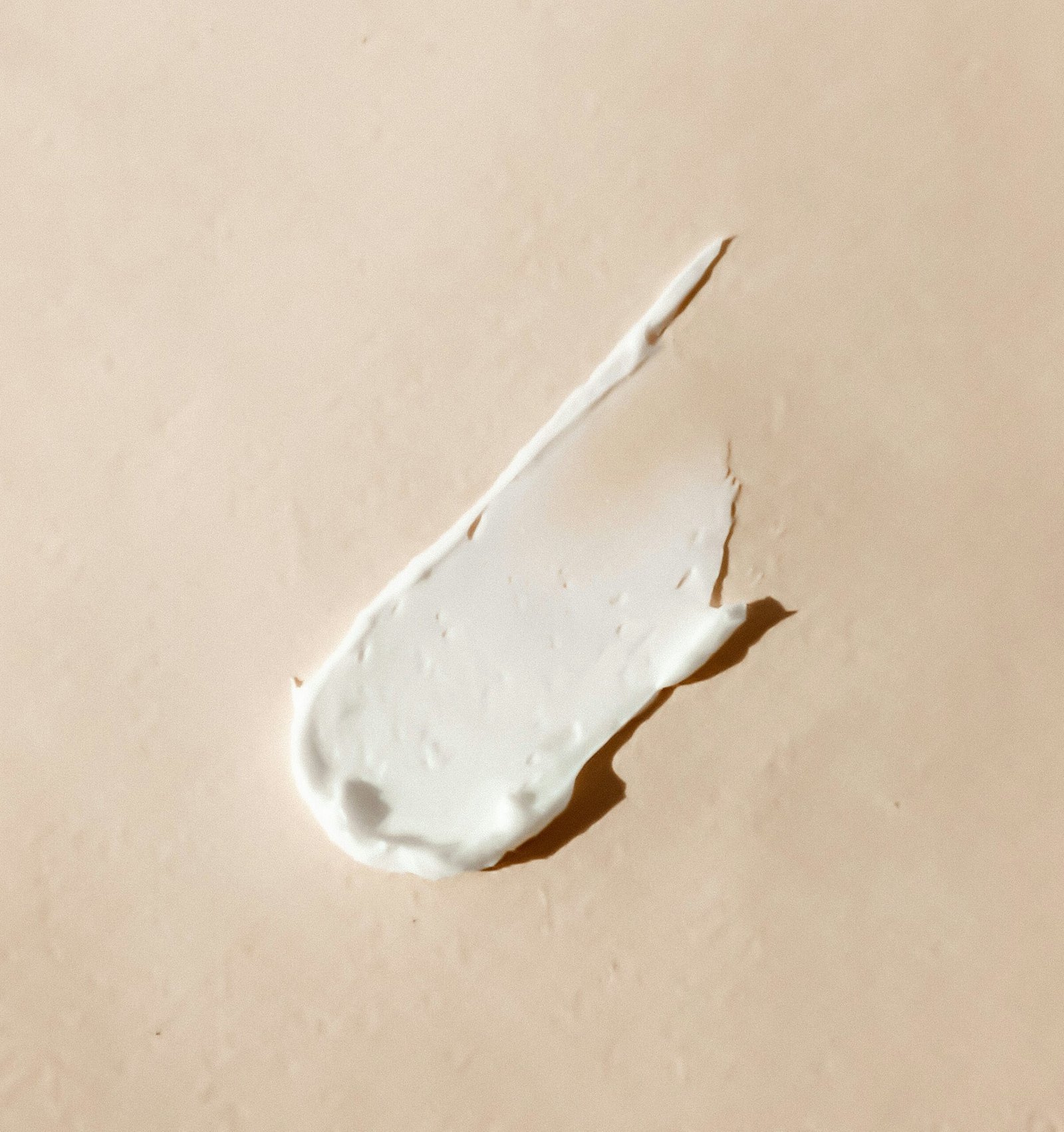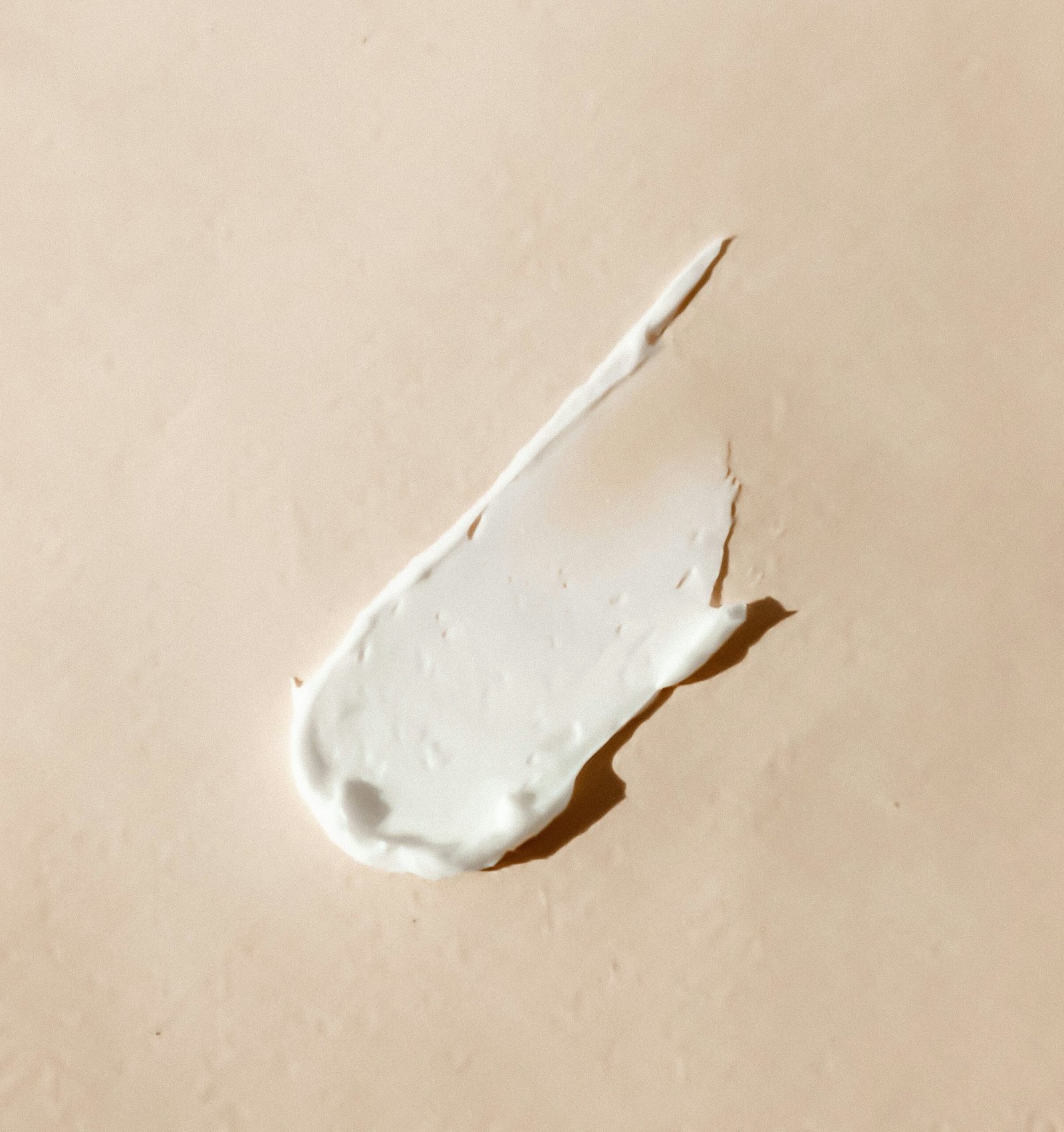
Introduction to Eye Cream
In the realm of skincare, eye cream holds a distinct place due to its targeted purpose and specialized formulation. The skin around the eyes is notably thinner and more delicate than the rest of the face, making it susceptible to various issues such as dark circles, puffiness, and fine lines. As we age, these concerns often become more pronounced, necessitating a dedicated approach to maintain the skin’s health and appearance.
Eye creams are designed to address these specific concerns, offering a concentrated blend of ingredients that are gentle yet effective. Unlike general facial moisturizers, eye creams are formulated to penetrate the delicate skin without causing irritation, making them an essential component of a well-rounded skincare regimen. They aim to hydrate, firm, and protect the skin, thereby reducing signs of aging and fatigue, and enhancing overall complexion.
The importance of incorporating an eye cream into your daily routine cannot be overstated. Regular use can help to mitigate the early signs of aging, providing a smoother and more youthful appearance. Moreover, eye creams often contain ingredients such as peptides, antioxidants, and hyaluronic acid, which specifically target and treat the unique challenges posed by the under-eye area.
Understanding the significance of eye cream is the first step towards achieving optimal eye care. As we delve deeper into this guide, we will explore the myriad benefits of eye cream, the key ingredients to look out for, and how to choose the best product tailored to your individual needs. This comprehensive overview aims to equip you with the knowledge to make informed decisions, ensuring that the delicate skin around your eyes receives the care it deserves.
Key Benefits of Using Eye Cream
Eye creams offer a myriad of benefits that go beyond simple moisturization, targeting some of the most common concerns associated with the delicate skin around the eyes. One of the foremost advantages of using eye cream is its ability to reduce the appearance of fine lines and wrinkles. These specialized formulations often contain ingredients like retinol, peptides, and hyaluronic acid, which work synergistically to promote collagen production and enhance skin elasticity. As a result, regular application can lead to smoother, more youthful-looking skin.
Another significant benefit is the reduction of dark circles. Ingredients such as vitamin C, caffeine, and niacinamide are commonly found in eye creams and are known for their brightening and anti-inflammatory properties. These components help to improve blood circulation and reduce pigmentation, making dark circles less noticeable over time. For example, users have reported seeing visible improvement in just a few weeks of consistent use, attributing the positive change to the potent blend of active ingredients in their eye cream.
Puffiness around the eyes is another common issue that eye creams can effectively address. Formulas enriched with cooling agents like cucumber extract and chamomile are particularly beneficial for reducing swelling and fluid retention. The application of eye cream can provide a soothing effect, helping to de-puff the under-eye area and create a more refreshed appearance.
Hydration is a crucial factor in maintaining the skin’s elasticity and preventing dryness, and eye creams excel in delivering this essential moisture. With ingredients like glycerin, shea butter, and ceramides, these products ensure that the delicate skin around the eyes stays hydrated and nourished. This not only helps in maintaining a supple texture but also serves as a protective barrier against environmental stressors.
Real-life testimonials further underscore the effectiveness of eye creams. Many individuals have shared their positive experiences, noting significant improvements in their under-eye appearance, enhanced hydration, and a reduction in common concerns like puffiness and dark circles. These firsthand accounts, combined with the scientifically-backed benefits of eye creams, make a compelling case for their inclusion in any comprehensive skincare routine.
Common Ingredients in Eye Creams
Eye creams are formulated with a range of ingredients to address various skin concerns. Among the most prevalent components are retinol, hyaluronic acid, peptides, vitamins, and caffeine, each offering unique benefits.
Retinol, a derivative of Vitamin A, is renowned for its anti-aging properties. It works by accelerating cell turnover, thereby reducing fine lines, wrinkles, and age spots. Retinol also helps to increase collagen production, which enhances skin elasticity.
Hyaluronic Acid is a powerful humectant that attracts and retains moisture, keeping the skin hydrated. Its ability to hold up to 1,000 times its weight in water makes it exceptionally effective in plumping and smoothing the delicate skin around the eyes, reducing the appearance of fine lines and puffiness.
Peptides are short chains of amino acids that serve as building blocks for proteins like collagen and elastin. They signal the skin to repair itself and boost collagen production, thereby improving firmness and elasticity. Peptides are particularly beneficial for reducing the appearance of dark circles and puffiness.
Vitamins such as Vitamin C and Vitamin E are also commonly found in eye creams. Vitamin C is a potent antioxidant that brightens the skin and combats free radicals, which can cause premature aging. Vitamin E, another antioxidant, works to protect the skin from environmental stressors and aids in moisture retention.
Caffeine is known for its ability to constrict blood vessels, which reduces puffiness and dark circles. It also provides a temporary tightening effect, making the skin appear smoother and more refreshed.
When choosing an eye cream, it’s also worth considering the origin of the ingredients. Natural ingredients, like plant extracts and essential oils, are often praised for being gentle and less likely to cause irritation. Conversely, synthetic ingredients are formulated for stability and potency, ensuring consistent results. Both types have their merits, and the best choice depends on individual skin needs and sensitivities.
How to Choose the Right Eye Cream for Your Skin Type
Choosing the right eye cream is essential to effectively address your unique skin concerns and enhance your overall skincare routine. To start, it’s crucial to identify your skin type, as different eye creams are formulated to cater to specific needs. If you have oily skin, look for lightweight, non-comedogenic formulas that won’t clog your pores. For those with dry skin, opt for richer, hydrating creams that provide intense moisture. Combination skin types may benefit from a balanced formula that hydrates without being too heavy. Sensitive skin requires gentle, hypoallergenic products that minimize the risk of irritation.
Beyond skin type, consider your specific skin concerns. If dark circles are your primary issue, seek out eye creams containing ingredients like vitamin C, niacinamide, or caffeine, which can help brighten and reduce discoloration. For puffiness, look for formulations with anti-inflammatory ingredients such as chamomile, green tea, or peptides. When targeting wrinkles and fine lines, retinol, hyaluronic acid, and peptides are beneficial as they promote collagen production and skin elasticity.
Personal preferences also play a significant role in selecting the perfect eye cream. If you favor natural or organic products, ensure that the eye cream is certified organic and free from synthetic additives. Those with fragrance sensitivities should opt for fragrance-free options to avoid potential irritation. Always review product labels to understand the ingredient list and choose based on what aligns with your skincare philosophy and concerns.
Before fully incorporating a new eye cream into your skincare routine, it’s wise to perform a patch test. Apply a small amount of the product to a discreet area of skin and monitor for any adverse reactions over 24-48 hours. This precautionary step helps ensure that the eye cream is compatible with your skin and reduces the risk of irritation or allergic reactions.
By taking these factors into account—skin type, specific concerns, and personal preferences—you can make an informed decision and select an eye cream that best addresses your needs, ultimately contributing to healthier, more radiant skin.
How to Properly Apply Eye Cream
Applying eye cream effectively is crucial to maximizing its benefits and minimizing potential irritation. The first step is to use a small amount of product, as the skin around the eyes is delicate and highly sensitive. A pea-sized amount of eye cream is generally sufficient for both eyes.
The application technique is equally important. Use your ring finger for applying eye cream, as it exerts the least amount of pressure. Gently tap, rather than rub, the cream around the orbital bone, which encircles the eye area. Begin from the inner corners under the eyes, moving outward and up around the brow bone. This gentle tapping motion helps stimulate circulation and allows the eye cream to be absorbed more effectively.
Timing also plays a pivotal role in the efficacy of eye cream. For optimal results, apply eye cream twice daily—once in the morning and once at night. Morning application helps to hydrate and protect the delicate eye area throughout the day, particularly under makeup. Nighttime application allows the eye cream to work in synergy with your skin’s natural repair processes.
Common mistakes to avoid include applying the eye cream too close to the eyes and using an excessive amount. Applying too close to the lash line can lead to product migration into the eyes, causing irritation and discomfort. Over-application can overwhelm the skin, leading to clogged pores and potential milia formation. By adhering to these guidelines, you can ensure that your eye cream delivers its intended benefits without any adverse effects.
DIY Eye Cream Recipes
For enthusiasts of natural and homemade skincare solutions, creating your own eye cream can be a rewarding and effective alternative. DIY eye creams offer numerous benefits, including the ability to customize the ingredients to address specific skin concerns and the assurance that your product is free from preservatives and artificial additives. Below are a few easy-to-follow recipes using common ingredients such as aloe vera, cucumber, coconut oil, and essential oils.
Recipe 1: Aloe Vera and Cucumber Eye Cream
This refreshing eye cream combines the soothing properties of aloe vera with the cooling effects of cucumber. To prepare, blend 1 tablespoon of aloe vera gel with 1 tablespoon of cucumber juice. Apply a small amount around your eyes in the morning and evening. Store the mixture in a clean, airtight container in the refrigerator for up to one week.
Recipe 2: Coconut Oil and Vitamin E Eye Cream
Coconut oil is known for its moisturizing properties, while vitamin E is a powerful antioxidant that can help reduce the appearance of fine lines. Melt 2 tablespoons of coconut oil and mix in 1 teaspoon of vitamin E oil. Allow the mixture to cool and solidify. Gently apply a small amount around the eyes before bedtime. Store in a cool, dark place for up to two months.
Recipe 3: Shea Butter and Essential Oils Eye Cream
Shea butter is deeply nourishing and can be combined with essential oils for added benefits. Melt 2 tablespoons of shea butter and mix in 2 drops of lavender essential oil and 2 drops of frankincense essential oil. Stir well and let it cool. Apply a small amount around the eyes as needed. Store in an airtight container away from direct sunlight for up to three months.
When making DIY eye creams, it is crucial to follow safety guidelines to ensure the effectiveness and safety of the product. Always use clean, sterilized containers and utensils to prevent contamination. Conduct a patch test on a small area of skin to check for any adverse reactions before applying the cream around your eyes. Additionally, it is advisable to store your DIY eye creams in a cool, dark place and use them within the recommended time frame to maintain their potency.
Top Eye Creams on the Market
Choosing the right eye cream can be a daunting task, given the plethora of options available. To help navigate this selection, we have curated a list of top-rated eye creams that cater to various skin types and budgets. These products have been evaluated based on their ingredients, benefits, and overall user satisfaction.
1. La Mer The Eye Concentrate
Renowned for its luxurious formula, La Mer’s The Eye Concentrate is infused with the brand’s signature Miracle Broth, which promises to rejuvenate the delicate skin around the eyes. Key ingredients include lime tea concentrate and hematite, which work to reduce the appearance of dark circles and fine lines. This premium product comes with a hefty price tag, but users rave about its effectiveness and luxurious feel.
2. Neutrogena Hydro Boost Eye Gel-Cream
For those on a budget, Neutrogena’s Hydro Boost Eye Gel-Cream offers excellent value without compromising on quality. This gel-cream hybrid is formulated with hyaluronic acid, which provides intense hydration and plumps the skin. It is lightweight, non-greasy, and suitable for all skin types, including sensitive skin. User reviews highlight its ability to reduce puffiness and refresh tired eyes.
3. Kiehl’s Creamy Eye Treatment with Avocado
Kiehl’s Creamy Eye Treatment with Avocado is a favorite among those with dry skin. Its rich, creamy texture is packed with nourishing ingredients like avocado oil and shea butter, which deeply moisturize and condition the skin. This eye cream is highly rated for its ability to smooth and soften the eye area, making it an excellent option for those dealing with dryness and fine lines.
4. Estée Lauder Advanced Night Repair Eye Supercharged Complex
Estée Lauder’s Advanced Night Repair Eye Supercharged Complex targets multiple signs of aging, including dark circles, puffiness, and fine lines. Its potent blend of antioxidants, peptides, and hyaluronic acid works overnight to repair and rejuvenate the skin. Users have reported noticeable improvements in the brightness and firmness of their under-eye area.
5. The Ordinary Caffeine Solution 5% + EGCG
The Ordinary’s Caffeine Solution 5% + EGCG offers an affordable yet effective solution for those dealing with puffiness and dark circles. This lightweight serum contains a high concentration of caffeine and Epigallocatechin Gallatyl Glucoside (EGCG), derived from green tea leaves. It is well-loved for its quick absorption and visible results in reducing under-eye bags and discoloration.
In summary, the best eye cream for you will depend on your specific skin concerns and budget. Whether you are looking for luxury or affordability, hydration or anti-aging benefits, the market offers a wide range of options to cater to your needs. Always consider user reviews and expert opinions to make an informed decision.
Frequently Asked Questions About Eye Cream
Understanding the nuances of eye cream can be vital in optimizing your skincare routine. Below, we address some of the most frequently asked questions to provide you with clear and concise information.
What is the difference between eye cream and regular moisturizer?
Eye creams are specifically formulated to address the unique characteristics of the skin around the eyes. This skin is thinner and more delicate compared to the rest of the face, requiring a gentler approach. Eye creams often contain targeted ingredients designed to tackle issues like dark circles, puffiness, and fine lines, which regular moisturizers may not address. Additionally, eye creams typically have a lighter texture to ensure they do not weigh down the sensitive skin around the eyes.
At what age should one start using eye cream?
There is no one-size-fits-all answer, but many skincare experts recommend starting an eye cream regimen in your mid-20s. This is the age when the skin’s collagen production begins to slow down, and early signs of aging like fine lines and dryness can start to appear. Early use of eye cream can help in maintaining the skin’s elasticity and delay the onset of more prominent aging signs.
How long does it take to see results from using eye cream?
Results can vary depending on the specific concerns and the formulation of the eye cream. Generally, it takes about four to six weeks of consistent use to see noticeable improvements. Ingredients like hyaluronic acid and caffeine can provide quicker, temporary results, while retinoids and peptides may take longer but offer more long-term benefits. Patience and consistency are key when it comes to skincare.
Can eye cream be used on other parts of the face?
While eye creams are designed specifically for the under-eye area, they can be used on other delicate areas of the face, such as around the lips where fine lines may appear. However, it’s generally more cost-effective to use a regular moisturizer for other parts of the face unless you have specific concerns that an eye cream can address more effectively. Always conduct a patch test to ensure that the product is suitable for other areas of your skin.
By addressing these common questions, we hope to demystify the use of eye creams and empower you to make informed decisions in your skincare journey.


